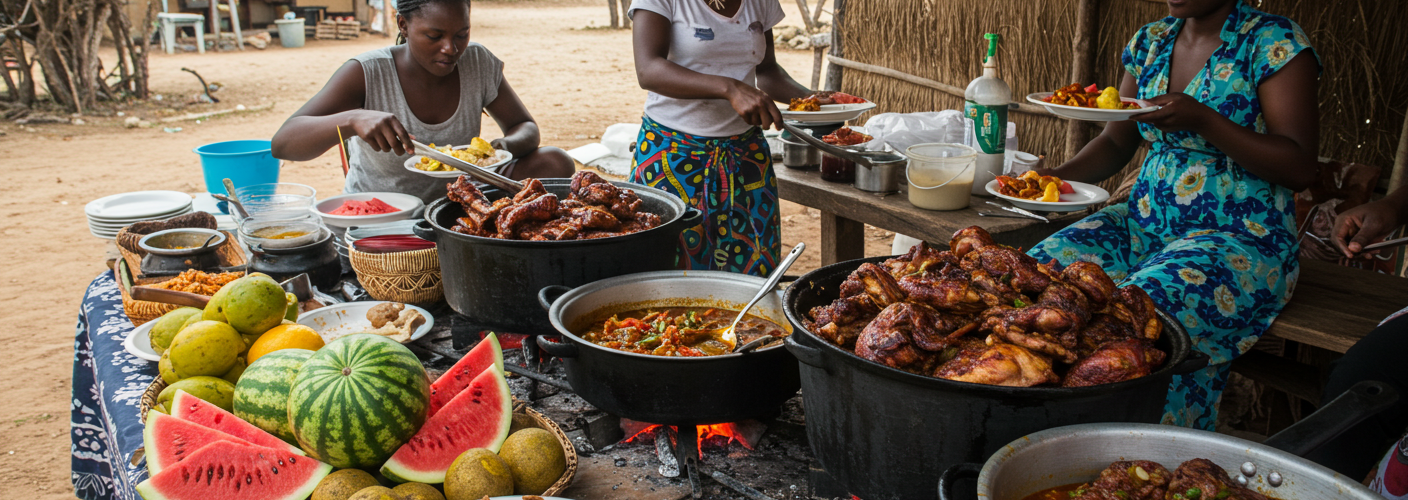Namibia, a country known for its stunning landscapes and diverse wildlife, also boasts a rich and varied culinary scene that reflects its cultural melting pot. The food of Namibia is as diverse as its geography, shaped by the indigenous tribes, German colonial influences, and the natural bounty of the land. From savory meats to traditional grains and succulent fruits, Namibian cuisine offers a delightful experience for anyone looking to expand their palate.
One of the most quintessential components of Namibian food is broadly enjoyed meats, particularly game meat. Due to the country’s vast wilderness, game animals like kudu, oryx, and springbok are often featured in local dishes. These meats, known for their rich flavors and lean texture, are typically grilled, dried, or prepared in hearty stews. Dishes such as biltong—a cured meat snack—are cherished by locals and tourists alike, serving as a perfect companion for outdoor adventures.
In contrast to its meat-dominant dishes, Namibia also values the use of own-grown grains. The staple food, pap, is often made from maize meal and is a common accompaniment to many meals. It is a versatile side dish that can be enjoyed with stews or sauces, absorbing the flavors and enhancing the overall dining experience. Traditional dishes may also include maize porridge and millet-based pap, showcasing the local grains that form the backbone of many meals.
Another popular dish, especially in the eastern regions of the country, is potjiekos, a slow-cooked stew traditionally prepared in a cast-iron pot over an open fire. It includes a mix of meat, vegetables, and spices that reflect the region’s agricultural output. This communal cooking method not only brings families together but also highlights the importance of sharing and hospitality in Namibian culture.
For those with a sweet tooth, Namibia offers delightful confectioneries made from local ingredients. Dishes like biltong fudge combine sweet and savory flavors, while marula fruit, which can be transformed into jams, jellies, and spirit, showcases the unique fruits indigenous to the area. Marula trees abound in Namibia, and their fruits are celebrated for their richness, both in flavor and nutritional value.
Furthermore, the German influence on Namibian cuisine is palpable, particularly in cities like Windhoek. Traditional German dishes, including schnitzels, bratwurst, and potato salads, have been integrated into the local food culture, creating a harmonious blend of flavors. Bakers, rooted in German culinary traditions, also produce a variety of decadent pastries and breads, adding a touch of European flair to Namibian tables.
As Namibia continues to embrace its culinary heritage, innovative chefs are taking traditional recipes and putting modern twists on them, ensuring that the rich food culture remains vibrant and relevant. From food festivals celebrating local fare to markets showcasing fresh produce, there are plenty of opportunities for food lovers to dive deeper into the flavors of Namibia.
In conclusion, Namibian cuisine is a delightful tapestry of flavors and cultures. Whether you are savoring a succulent game meat dish, indulging in hearty side dishes, or exploring the unique fruits of the land, you’ll find that the food of Namibia is a celebration of its rich natural resources and the traditions of its people. If you ever find yourself in this beautiful country, be sure to experience its culinary offerings; your taste buds will thank you!




Add comment